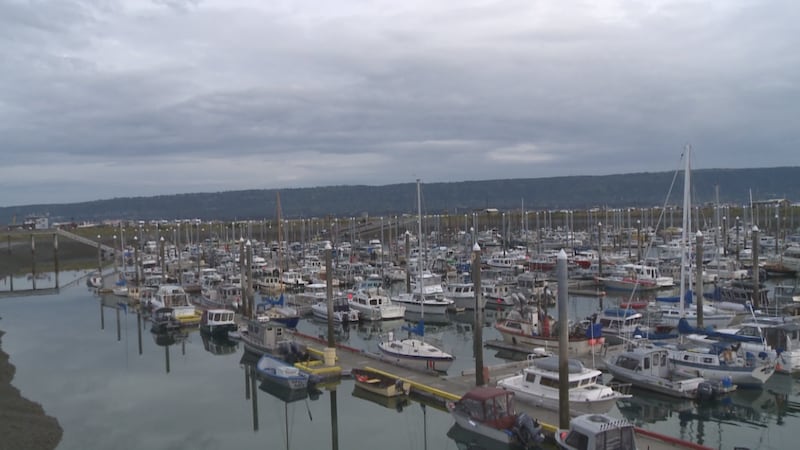‘Life or death’: What happens now to suicidal young Alaskans with closure of Crisis Recovery Center
In Alaska, the state with the highest rate of youth suicides, another therapy option closes
ANCHORAGE, Alaska (KTUU) - The Providence Crisis Recovery Center, a vital short-term residential facility for teenagers and young people experiencing acute mental health crises, will close May 16 due to the sudden loss of a critical $1.2 million grant, officials confirmed Wednesday.
It is a major hit to a state that lacks adequate mental health care services, and one that also often leads the nation in suicide rates.
In a one-on-one Zoom interview, Rep. Genevieve Mina, D-Anchorage, who chairs the House Health & Social Services Committee, called the news “a bit of a shock” not just professionally, but personally.
“My sister-in-law works at the Crisis Recovery Center,” Mina shared. “On one end, a member of my family has just lost her job, but on the other end, it’s about the huge impacts that this will have for our youth in this state, especially as we are facing a behavioral health crisis.”
Providence Alaska confirmed the closure in a statement released Wednesday, citing financial strain from inflation, labor shortages, and delayed insurer payments. The organization said it can no longer sustain the CRC without stable funding, estimating a projected loss of over $2 million annually.
“The CRC has been a Providence-subsidized health service primarily funded by state and federal grants and Medicaid reimbursements. Unfortunately, a $1.2 million annual grant was abruptly canceled in March; the program is now projected to lose more than $2 million annually,” Providence wrote in an emailed statement.
In response to a request for comment, Jeff Turner, a spokesperson for Gov. Mike Dunleavy, said a federally funded block grant was canceled by the government on March 24, and that “no state funds were involved.”
Providence says the grant money was provided by the state with federal funding resources.
Turner also did not respond to questions about the impact of the closure of the CRC in a state with one of the highest suicide rates in the country.
Alaska’s News Source attempted to clarify from the governor’s office about state money provided to CRC and Turner replied, in part, “sigh.”
He went on to say, “Funding for CRC was included in the current FY25 budget and is also in next year’s proposed state budget (FY26) that has not been passed by the legislature yet.
“[The Governor’s office] can’t tell you what happens to the funding for FY26 if the CRC closes next month. That is a decision the legislative finance committees will have to make. Remember, the state constitution grants the legislature the power of appropriation.”
The latest data from the Centers for Disease Control and Prevention shows that in 2023, Alaska led the nation in suicide death rates with 28.15 deaths per 100,000 people. Montana was second-highest with 26.65 per 100K and the District of Columbia held the lowest rate at 5.75 per 100K.
CRC has helped roughly 100 adolescent patients a year, according to Providence representative Mikal Canfield. The center saw 105 adolescent patients in 2022 before dipping to 82 in 2023 and 92 last year.
Patients can stay for three to seven days, or even longer, working with therapists to “cope with stressful life events with a goal of less anxiety and depression.”
The center, near UAA and Providence Alaska Medical Center, has quiet rooms where young people continue with school work, engage in talk therapy, create art and deal with trauma.
Mina said the closure highlights long-standing funding gaps in Alaska’s behavioral health system, especially since reforms to Medicaid and other state programs.
“We have been trying to fight tooth and nail to increase funding for behavioral health services,” Mina said. “We have the highest rates of youth suicide in the nation and the second highest rates of suicide for adults.”
The center, which opened in 2007, has 30 staff members and serves up to 16 patients at a time. It has long filled a critical gap for adolescents who need more than outpatient therapy but less than full hospitalization.
“The closure of this facility means that more kids won’t just have to choose between an ER bed and also the residential facility, but they are going to shift towards more institutionalized care and that is not what we’re trying to do,” Mina said.
Mina is currently advocating for a $13.7 million increase in behavioral health funding and is pushing a bill to implement a 988 crisis line surcharge — similar to 911 — to help support mental health crisis services statewide.
She also shared a deeply personal reason for her advocacy.
“My dad died by suicide when I was a child,” Mina said. “I know what it feels like to be in a literal life-or-death situation where you want to make sure that all options are available. We’re trying to help save lives.”
Mina urged Alaskans to share their stories and contact their legislators.
Providence says it will work to transition patients and retain affected staff, but the impact will ripple far beyond the 30 employees.
Editor’s note: This story has been updated to correct the number of adolescent patients seen yearly at the Crisis Recovery Center after Providence officials erroneously gave out incorrect numbers.
Copyright 2025 KTUU. All rights reserved.














